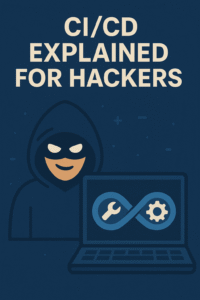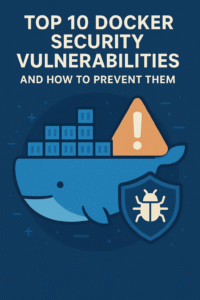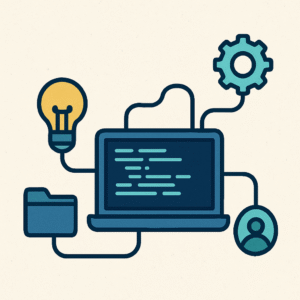Real-World Webhook Attacks
The Ultimate 2025 Guide to Understanding and Preventing Webhook Exploits
- Introduction
- What Are Webhooks?
- Webhook Vulnerabilities Overview
- Real-World Webhook Attack Examples
- Attack Techniques Comparison
- Impact & Mitigation of Webhook Attacks
- Cost of Webhook Security Measures
- Tools for Webhook Attack Detection
- Use Cases & Scenarios for Securing Webhooks
- Pros & Cons
- How to Prevent Webhook Attacks?
- Conclusion
Introduction to Real-World Webhook Attacks
Webhook attacks are a growing threat in 2025, targeting the critical integrations that power modern applications. From automating workflows to syncing data across platforms, webhooks are essential but vulnerable to exploitation. This article dives deep into the world of webhook attacks, exploring their vulnerabilities, real-world examples, and mitigation strategies. We’ll compare attack techniques, assess their impact, and evaluate tools to enhance webhook security. By the end of this 4000+ word guide, you’ll be equipped to identify risks and implement robust defenses to safeguard your webhook-driven integrations.
Why does this matter? With the rise of API-driven architectures and cloud-native applications, unsecured webhooks can lead to data breaches, service disruptions, and financial losses. Learn more about API security trends to stay ahead.
What Are Webhooks and Why Are They Vulnerable?
Webhooks are user-defined HTTP callbacks that enable real-time data transfer between applications. For example, a webhook might notify a payment processor of a purchase. However, their simplicity makes them prone to webhook attacks. Webhooks often lack robust authentication and expose public endpoints, enabling attackers to exploit vulnerabilities like payload tampering or SSRF. Learn how to protect against these risks in our cybersecurity best practices guide.
Webhook Vulnerabilities Overview
Webhook vulnerabilities arise from poor design or implementation. Common issues include:
- No Authentication: Allowing malicious payloads to reach endpoints.
- Data Exposure: Transmitting sensitive data without encryption.
- Replay Attacks: Resending captured payloads.
- SSRF: Tricking servers into accessing restricted systems.
These vulnerabilities make webhooks prime targets for webhook attacks, as explored below.
Real-World Webhook Attack Examples
Real-world webhook attacks demonstrate their severity:
GitHub Webhook Exploitation (2023): Attackers forged payloads to inject malicious code into CI/CD pipelines, highlighting the need for CI/CD security.
Stripe Payment Hijacking (2024): Phishing campaigns exploited unsecured endpoints, redirecting funds and emphasizing webhook security.
Attack Techniques Comparison
Webhook attacks vary by technique. Payload tampering involves altering data, while SSRF attacks trick servers into unauthorized requests. Payload tampering is simpler but limited, whereas SSRF can compromise entire networks. Both require robust webhook security measures.
Impact & Mitigation of Webhook Attacks
Webhook attacks can cause data leaks, financial losses, or service disruptions. Mitigation includes:
- Signature Verification: Use HMAC to validate payloads.
- HTTPS: Encrypt data to prevent interception.
- Rate Limiting: Mitigate DoS attacks.
- IP Whitelisting: Restrict requests to trusted sources.
Cost of Webhook Security Measures
Securing webhooks balances cost and protection. Basic measures like HTTPS are low-cost, while advanced tools like WAFs increase expenses. Startups can use open-source solutions, while enterprises may invest in platforms like Datadog for comprehensive webhook security.
Tools for Webhook Attack Detection
Tools to prevent webhook attacks include:
- NGINX with Lua Scripts: Validates signatures.
- AWS WAF: Blocks malicious traffic.
- Datadog: Detects anomalies in webhook activity.
Use Cases & Scenarios for Securing Webhooks
Webhook security varies by use case. DevOps teams need signature verification for CI/CD webhooks, while e-commerce platforms require HTTPS for payment webhooks. Explore more in our e-commerce security guide.
Pros & Cons: A Side-by-Side Comparison
| Feature | Payload Tampering | SSRF Attacks |
|---|---|---|
| Ease of Execution | Simple, requires minimal expertise | Complex, requires infrastructure knowledge |
| Impact | Limited to specific endpoints | Can compromise entire networks |
| Mitigation Complexity | Low (signature verification) | High (WAFs, monitoring) |
| Detection Tools | NGINX, basic logging | AWS WAF, Datadog |
How to Prevent Webhook Attacks?
Preventing webhook attacks requires HTTPS, HMAC signatures, and monitoring tools. In 2025, AI-driven threat detection will enhance webhook security. Learn about emerging tools in our AI cybersecurity trends guide.
Conclusion: The Future of Webhook Security
Webhook attacks are a rising threat in 2025. By addressing webhook vulnerabilities and implementing tools like AWS WAF, organizations can ensure robust webhook security. Proactive measures are key to maintaining trust.




































